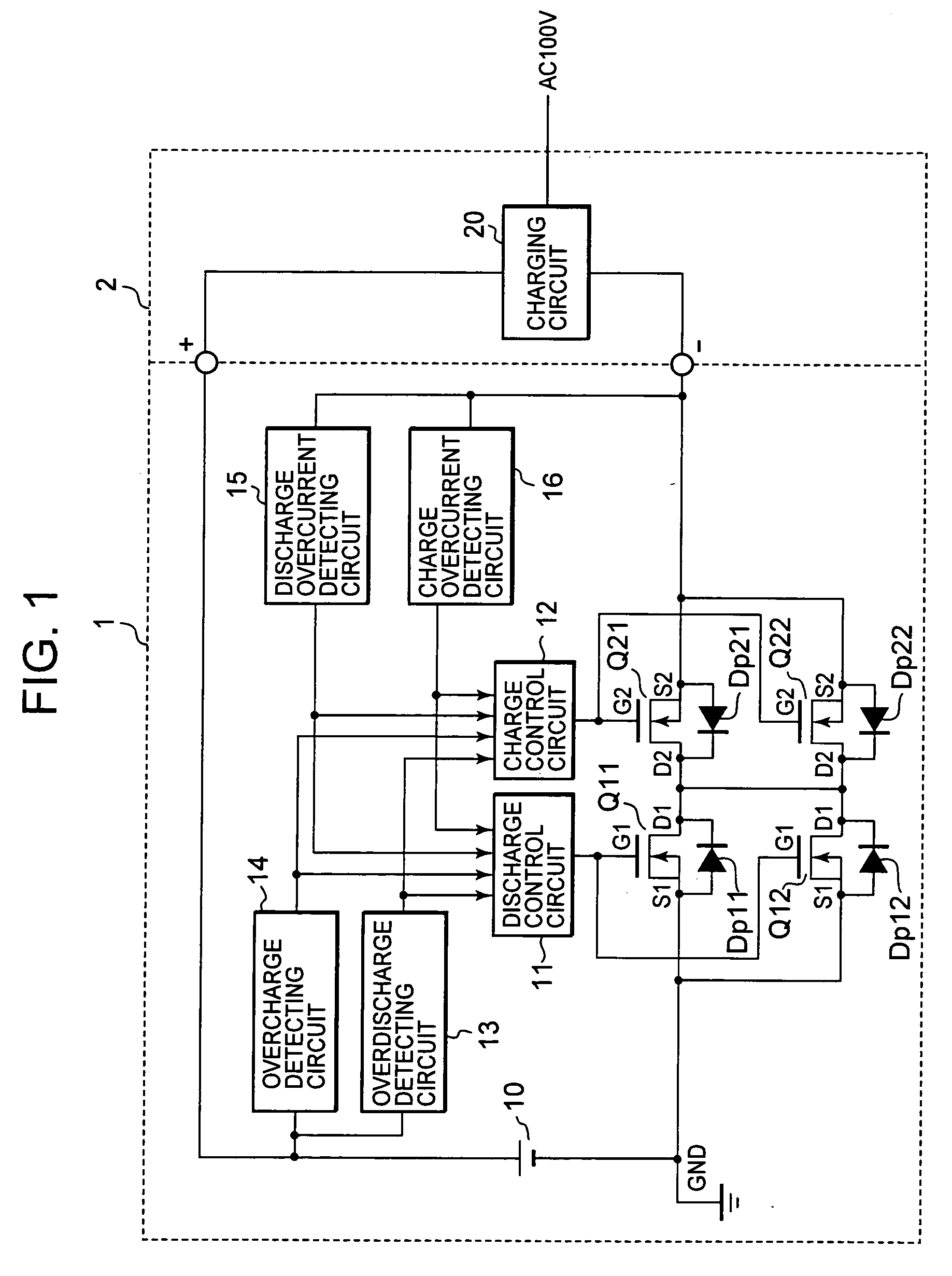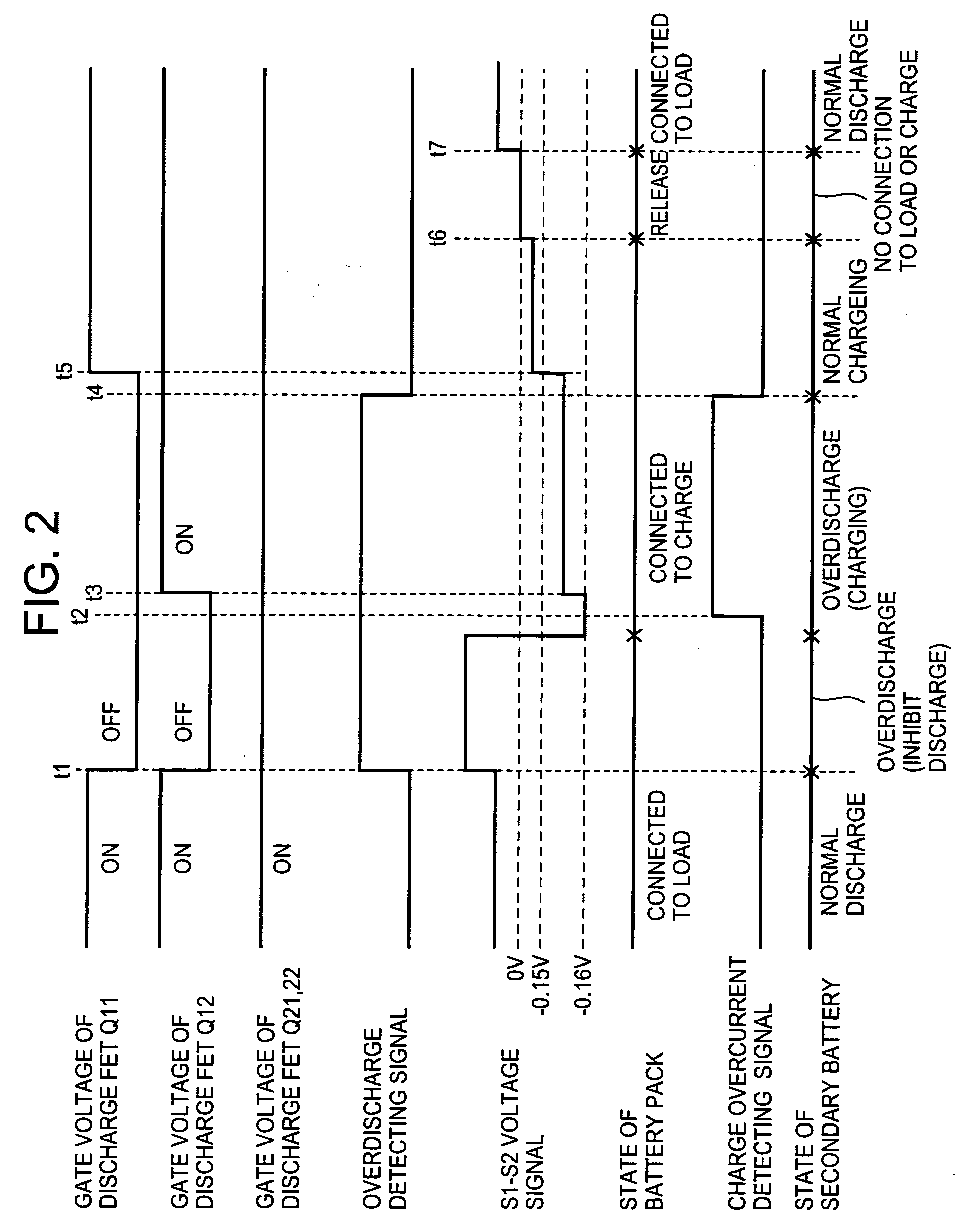Battery protective device and semiconductor integrated circuit device
a battery protective device and integrated circuit technology, applied in the direction of safety/protection circuits, secondary cells servicing/maintenance, pulse techniques, etc., can solve the problems of overheating the circuit loss of the battery protective device and the semiconductor integrated circuit device according to the invention is low, and the “on” resistance of the battery protective device and the semiconductor integrated circuit device according to the invention is rather high, and the effect of preventing the thermal destruction of the semiconductor devi
- Summary
- Abstract
- Description
- Claims
- Application Information
AI Technical Summary
Benefits of technology
Problems solved by technology
Method used
Image
Examples
Embodiment Construction
[0041]A preferred embodiment of the invention will be described with reference to the accompanying drawings.
[0042]FIG. 1 is a block diagram showing a circuit structure of the battery protective device relating to a preferred embodiment of the invention. It shows a charger 2 with a charging circuit 20 connected to a battery pack 1. The battery pack 1 includes: a battery 10; discharge FETs Q11 and Q12 for discharge control of semiconductor devices which control the discharge current of the battery 10; charge FETs Q21 and Q22 for charge control of semiconductor devices which control the charge current of the battery 10; discharge control circuit 11, which controls “ON” and “OFF” of the discharge FETs Q11 and Q12; charge control circuit 12 which controls “ON” and “OFF” of the charge FETs Q21 and Q22; an overdischarge detecting circuit 13, which detects overdischarge of the battery 10; an overcharge detecting circuit 14, which detects overcharge of the battery 10; a discharge overcurrent...
PUM
 Login to View More
Login to View More Abstract
Description
Claims
Application Information
 Login to View More
Login to View More - R&D
- Intellectual Property
- Life Sciences
- Materials
- Tech Scout
- Unparalleled Data Quality
- Higher Quality Content
- 60% Fewer Hallucinations
Browse by: Latest US Patents, China's latest patents, Technical Efficacy Thesaurus, Application Domain, Technology Topic, Popular Technical Reports.
© 2025 PatSnap. All rights reserved.Legal|Privacy policy|Modern Slavery Act Transparency Statement|Sitemap|About US| Contact US: help@patsnap.com



